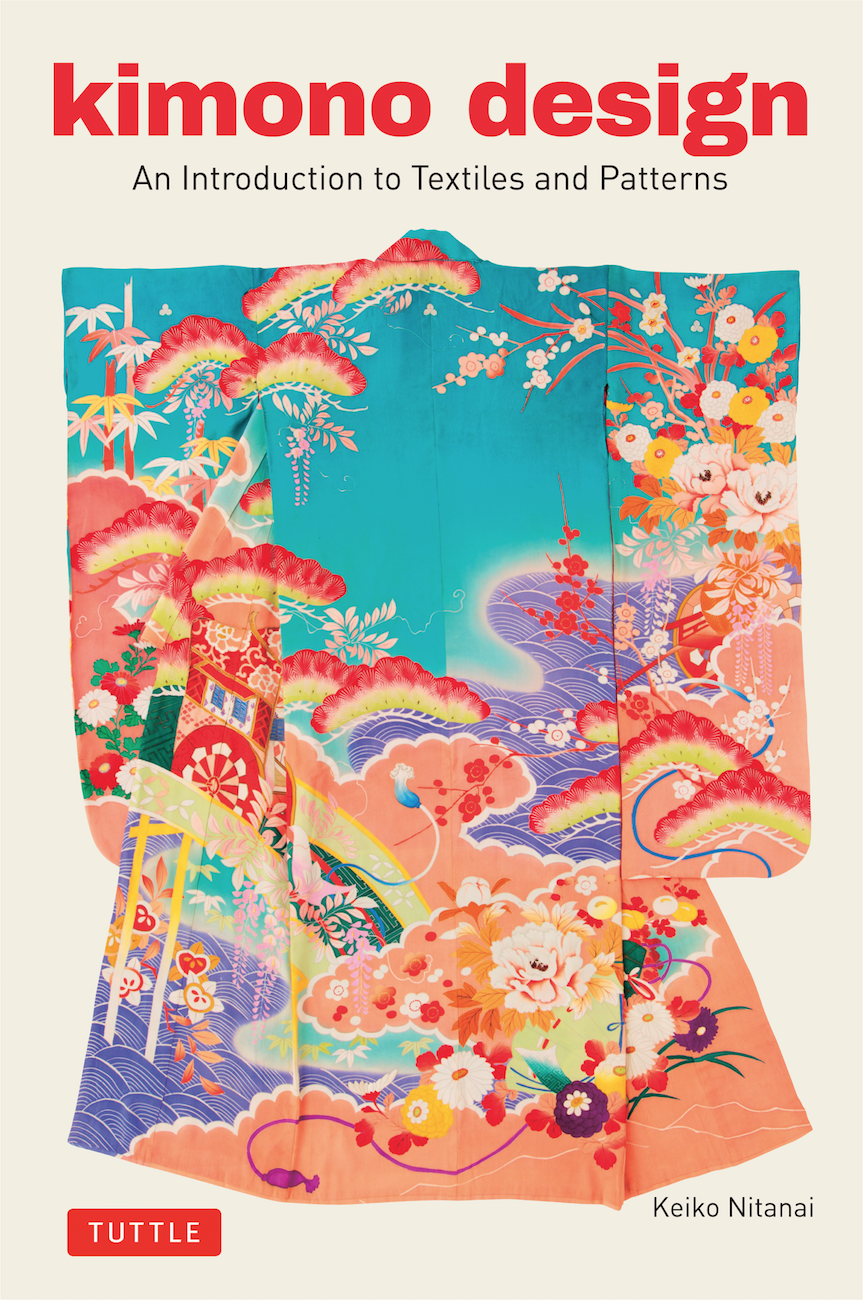Kimono Design: An Introduction to Textiles and Patterns is a 300 page treasure trove of pattern inspiration, featuring kimono and other elements of traditional Japanese dress, both old and new. All of the designs featured in the book come from the collection of the Kyoto Antique Fabric Preservation Society, an organization founded by the book’s author, Keiko Nitanai.
The book is organized neatly by season–Spring, Summer, Autumn and Winter–and gives fascinating descriptions of the origins, symbolism and historical use of motifs ranging from cherry blossoms to landscapes; swans to musical instruments; ships, fans, dogs, bridges, and everything in between.
The photographs in the book (many full-page) are breathtaking and show pattern, dye, and stitching in exquisite detail. But the tidbits of text that accompany the photos are equally as absorbing. One of the many interesting things I learned from my reading was the meaning behind a ubiquitous Japanese motif that I had always wrongly assumed was purely geometric/decorative. You will probably recognize asanoha immediately as it has been re-interpreted a thousand times over. Reading about the motif in Kimono Design, however, gave me an entirely new appreciation and curiosity for geometric designs that upon first glance may appear simply decorative, but in reality are infused with meaning and history. A humbling reminder to always dig a little deeper and not take a design at face value! Here is an excerpt:
“Before cotton was introduced to Japan in the seventeenth century, hemp was used to make paper and as a fiber crop for clothing. Many kimono designs portray hemp as an attractive plant, usually in the form of geometric motifs. For example, the hemp leaf pattern asanoha (from asa meaning “hemp” and ha meaning “leaf”) is made up of six diamond shapes representing the six pointed leaves at the top of a hemp stem, laid out to form a six-pointed star. The regular geometric pattern, while abstract, represents overlapping hemp leaves. The pattern, and its numerous variations, can be combined with other seasonal motifs or used as the main design on a garment.
Because hemp represents growth and good health, the asanoha pattern was often used on children’s and babies’ clothes and underwear in the hope they would grow up to be as strong as hemp. Kimono bearing the asanoha design can be worn all year round, not only in winter.”
Fascinating, no?
Whether you are seeking a dose of history with your surface design, or simply wanting to be visually stimulated and inspired, I highly recommend checking out Kimono Design. -Chelsea













